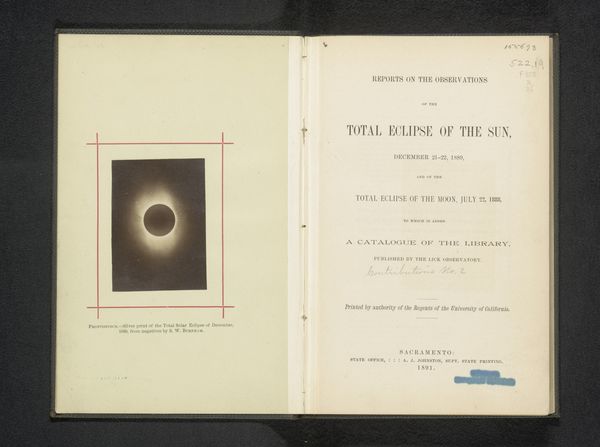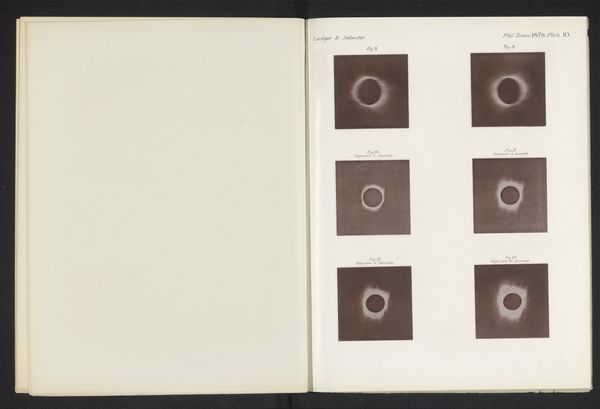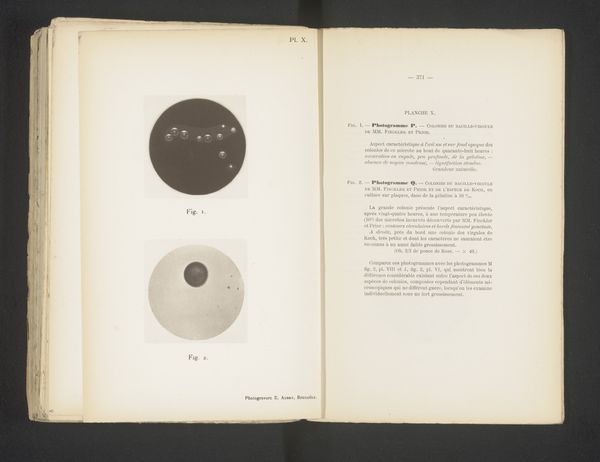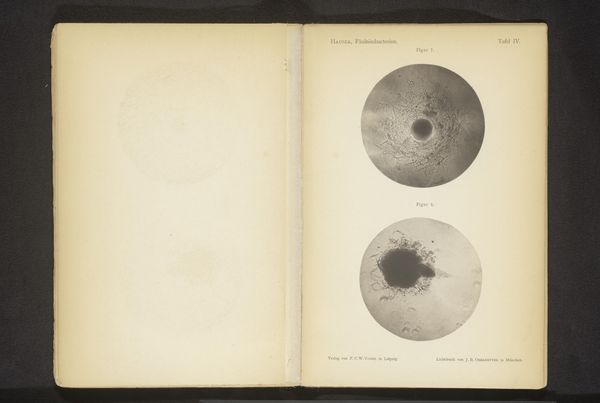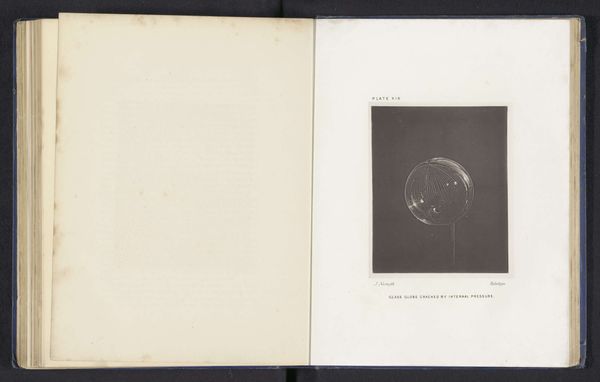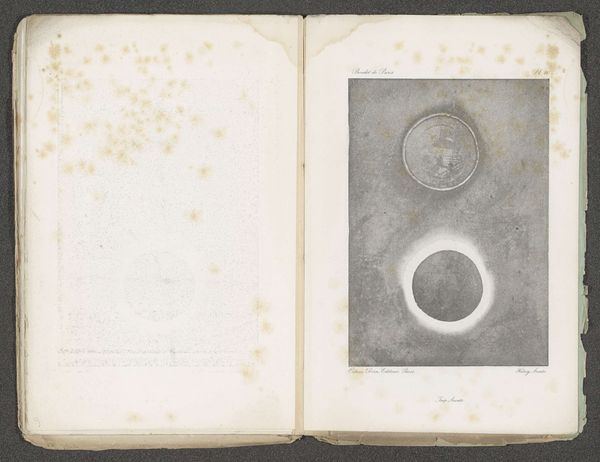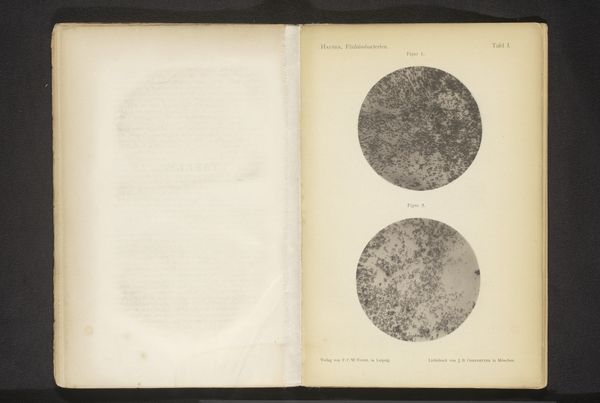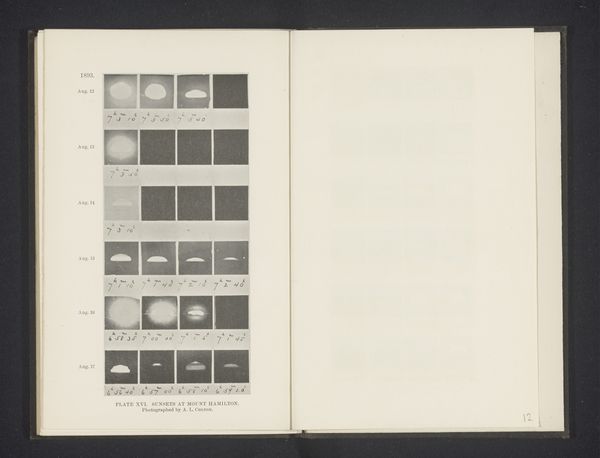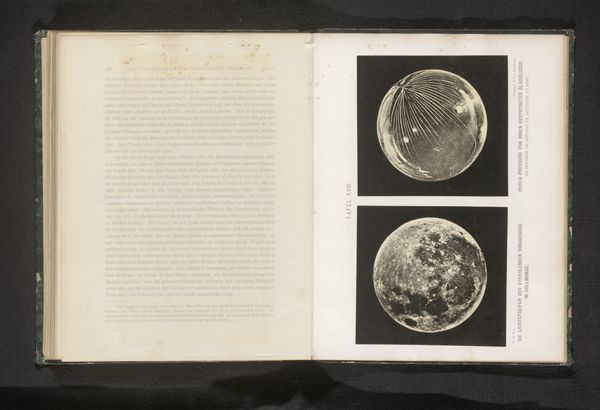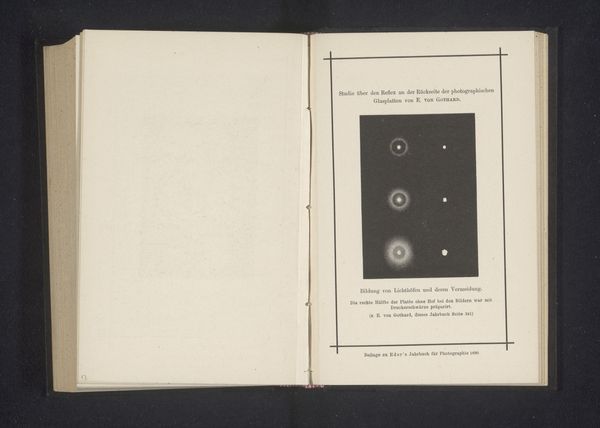
print, photography
# print
#
photography
#
history-painting
#
monochrome
Dimensions: height 72 mm, width 94 mm
Copyright: Rijks Museum: Open Domain
Curator: Looking at these photographic prints depicting the sun's corona during a total solar eclipse, taken around 1869 by Albert Schutze, what strikes you first? Editor: The stark contrast! A solid black disc ringed by the delicate, almost ethereal corona. It's visually arresting. It seems so fragile somehow, this blinding light rendered into grayscale and contained within the limits of a photograph. Curator: It's quite evocative, isn't it? These images were likely produced and distributed as scientific documentation, to capture what the human eye alone could not easily retain. Photography was a vital tool in solidifying the image of scientific authority and distributing knowledge. Note the four distinct renderings—different photographic processes capturing subtle variations. Editor: Right, these weren’t simply artistic endeavours; the medium itself – photography – carries the weight of scientific credibility and empirical observation. You have to wonder about the equipment used, the collodion process, the lengths the scientists would have gone. What about the availability of material to make this kind of capture? Curator: Indeed, thinking about these images in relation to the history of photographic production expands the context. These are more than mere celestial images; they are historical artifacts imbued with labor and social context of 19th-century scientific pursuits. They're mass produced using photographic printing techniques. Consider also the consumption of knowledge as a status signifier in that era, perhaps? Editor: That's interesting. Looking closely, there are inscriptions, dates and names beneath each image suggesting careful annotations, which further embeds the role of the scientist as objective recorder. Each image seems almost identical until closer inspection of each individual treatment and printing technique reveals new observations to the scientific eye, adding or omitting visual elements with great deliberation. It adds another layer of nuance, highlighting their analytical perspective through material choices. Curator: The way science translated abstract, astronomical events into something that could be observed and analyzed is rather extraordinary to consider even now. These mass printed photographs allowed knowledge to become democratized and accessible, as well as opening up access to the spectacle of these moments in science’s infancy. Editor: Well, thinking through it again has certainly offered new dimensions to that initial experience of awe; thinking about materiality gives the images more layers than initial inspection suggested! Curator: For me, viewing scientific advancement through artistic means only heightens how scientific knowledge came to affect not only industry, but public perception itself during this transformational period of photographic advancements.
Comments
No comments
Be the first to comment and join the conversation on the ultimate creative platform.

